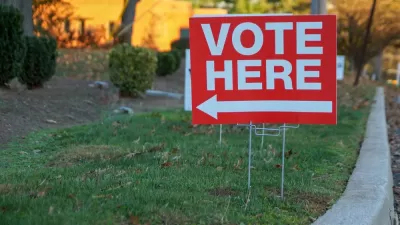The movement stems from demographic changes in the work force. For companies seeking younger hires, they need to go to where they prefer to live. Suburban campuses may be replaced by urban headquarters or the addition of satellite offices in cities.

Lauren Weber points to many "corporate giants abandoning vast suburban campuses for urban offices nearer to the young, educated and hyper-connected workers who will lead their businesses into the digital age." While her focus is the Chicago area, she includes examples from throughout the country.
"The showcase headquarters of the past, the beautiful suburban campuses—that's a very obsolete model now," said Patrick Phillips, CEO of the Urban Land Institute, a land-use think tank.
Vacancy rates reflect the "back to the city" movement. In 2013, 13,9% of urban space stood empty compared with 18.5% in suburbs.
"There's increasing evidence that this represents a broad trend among large and middle-size companies," said Enrico Moretti, an economist at the University of California, Berkeley, and author of "The New Geography of Jobs."
For companies who choose to say put, many "are opening or expanding urban satellite offices, especially for technology and research staff working on product development and innovation, according to Mr. Moretti."
Lauren Weber goes into more detail in an audio version of the article with host Gordon Deal of "The Wall Street Journal This Morning" accessible from the article.
The same article also appears in Yahoo! Finance.
FULL STORY: Companies Say Goodbye to the 'Burbs

Alabama: Trump Terminates Settlements for Black Communities Harmed By Raw Sewage
Trump deemed the landmark civil rights agreement “illegal DEI and environmental justice policy.”

Planetizen Federal Action Tracker
A weekly monitor of how Trump’s orders and actions are impacting planners and planning in America.

The 120 Year Old Tiny Home Villages That Sheltered San Francisco’s Earthquake Refugees
More than a century ago, San Francisco mobilized to house thousands of residents displaced by the 1906 earthquake. Could their strategy offer a model for the present?

In Both Crashes and Crime, Public Transportation is Far Safer than Driving
Contrary to popular assumptions, public transportation has far lower crash and crime rates than automobile travel. For safer communities, improve and encourage transit travel.

Report: Zoning Reforms Should Complement Nashville’s Ambitious Transit Plan
Without reform, restrictive zoning codes will limit the impact of the city’s planned transit expansion and could exclude some of the residents who depend on transit the most.

Judge Orders Release of Frozen IRA, IIJA Funding
The decision is a victory for environmental groups who charged that freezing funds for critical infrastructure and disaster response programs caused “real and irreparable harm” to communities.
Urban Design for Planners 1: Software Tools
This six-course series explores essential urban design concepts using open source software and equips planners with the tools they need to participate fully in the urban design process.
Planning for Universal Design
Learn the tools for implementing Universal Design in planning regulations.
Clanton & Associates, Inc.
Jessamine County Fiscal Court
Institute for Housing and Urban Development Studies (IHS)
City of Grandview
Harvard GSD Executive Education
Toledo-Lucas County Plan Commissions
Salt Lake City
NYU Wagner Graduate School of Public Service





























